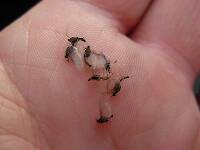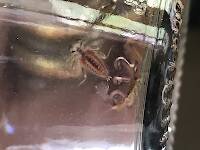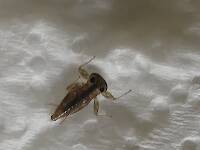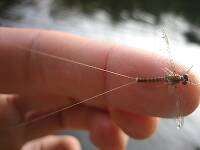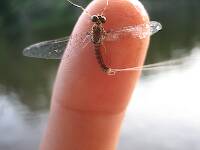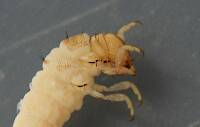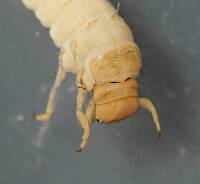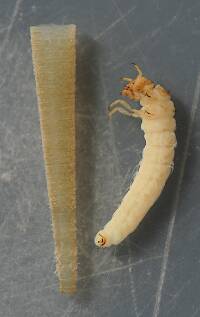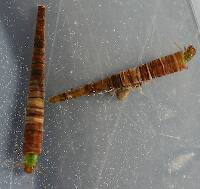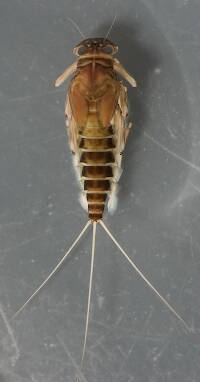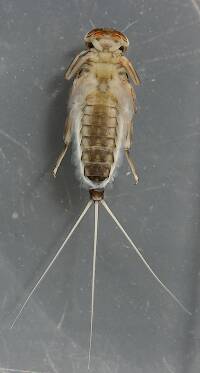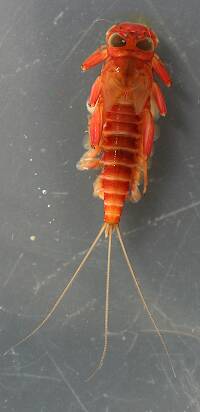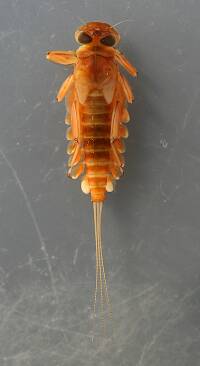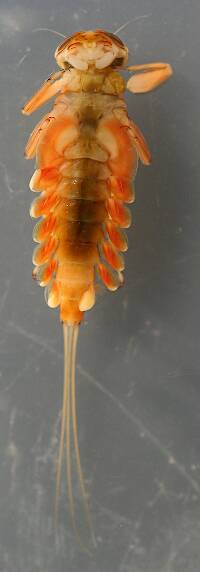
Blue-winged Olives
Baetis
Tiny Baetis mayflies are perhaps the most commonly encountered and imitated by anglers on all American trout streams due to their great abundance, widespread distribution, and trout-friendly emergence habits.
Featured on the forum

This specimen keys to the Epeorus albertae group of species. Of the five species in that group, the two known in Washington state are Epeorus albertae and Epeorus dulciana. Of the two, albertae has been collected in vastly more locations in Washington than dulciana, suggesting it is far more common. On that basis alone I'm tentatively putting this nymph in albertae, with the large caveat that there's no real information to rule out dulciana.

Troutnut is a project started in 2003 by salmonid ecologist Jason "Troutnut" Neuswanger to help anglers and
fly tyers unabashedly embrace the entomological side of the sport. Learn more about Troutnut or
support the project for an enhanced experience here.
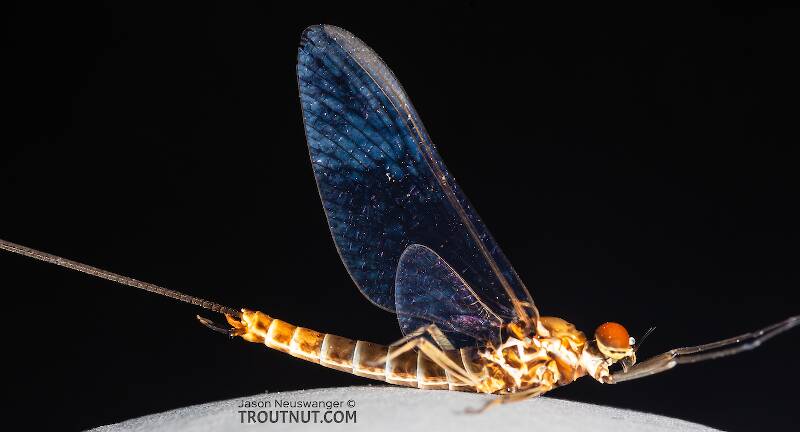
Although I could not find the preserved specimen to examine under my good new microscope, I'm tentatively calling it one Rhithrogena hageni, based on apparent similarity to this specimen, which I was able to positively ID.
The relative angle of the penes is a bit shallower in this specimen, but I photographed another specimen from the same collecting trip (and I think even the same swarm, although I don't recall for sure) as the other one, and it had the shallower angle seen on this specimen. I'm guessing it's just variation within the species.
The relative angle of the penes is a bit shallower in this specimen, but I photographed another specimen from the same collecting trip (and I think even the same swarm, although I don't recall for sure) as the other one, and it had the shallower angle seen on this specimen. I'm guessing it's just variation within the species.
Troutnut on Jul 22, 2019July 22nd, 2019, 8:11 pm EDT
This seems to be some sort of Heptageniid, based on the two tails and five segments on the hind tarsus. Following the key in Merritt & Cummins seems to lead to Rhithrogena, but it doesn't fit a characteristic described in Needham's Biology of Mayflies for that genus: "Tibia of hind leg in both sexes about 1/4 length of femur."
Jason Neuswanger, Ph.D.
Troutnut and salmonid ecologist
Troutnut and salmonid ecologist
Millcreek on Jul 23, 2019July 23rd, 2019, 10:34 am EDT
For what it's worth, this seems to be Heptageniidae and Rhithrogena based on the wings and penes. Also, if you take a look at Bugguide the photos there don't show the hind tibia being 1/4 the length of the femur.
https://bugguide.net/node/view/50753/bgimage?from=0
https://bugguide.net/node/view/50753/bgimage?from=0
"If we knew what it was we were doing, it would not be called research, would it?"
-Albert Einstein
-Albert Einstein
Quick Reply
Related Discussions
Topic
Replies
Last Reply
2
Nov 26, 2007
by FlyDoc
by FlyDoc



